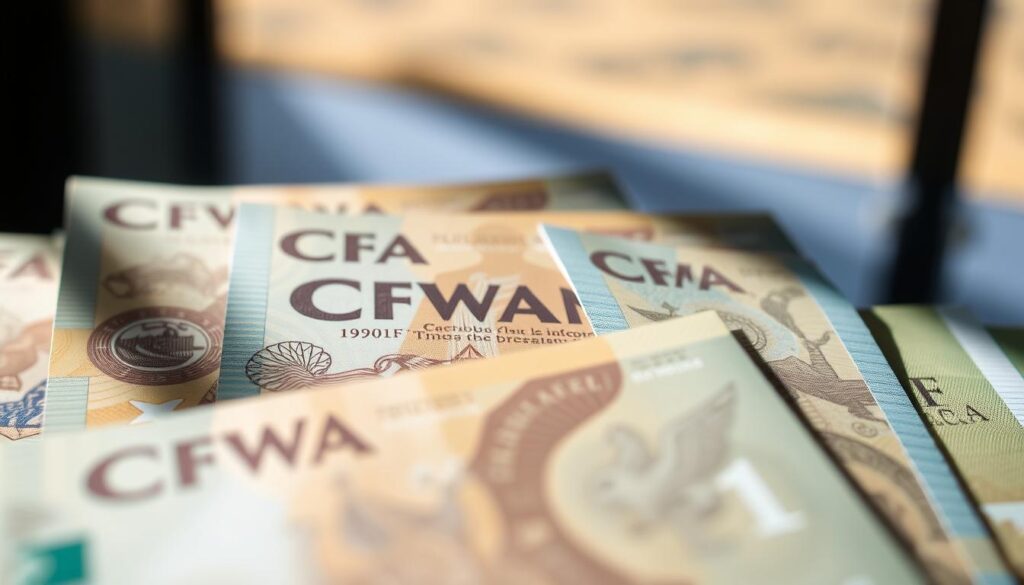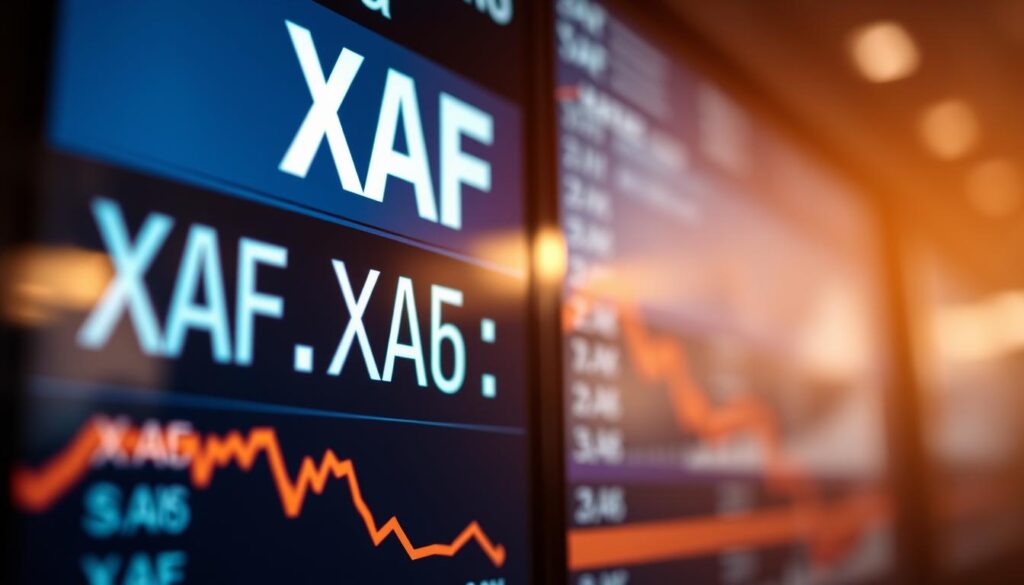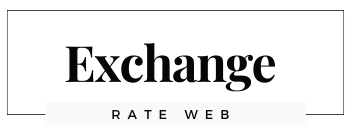
Did you know six central African countries use the same currency? These countries are Cameroon, Central African Republic, Chad, Republic of the Congo, Equatorial Guinea, and Gabon. They all use the Central African CFA Franc, or XAF. This shared currency helps keep their economies stable and trade flowing.
The Central African CFA Franc is more than just money. It shows how these countries work together economically. It’s supported by the French treasury and tied to the euro. This makes it a stable choice in the world of currency.
Key Takeaways
- The XAF currency is used by six central African countries.
- It is backed by the French treasury.
- The currency is pegged to the euro.
- XAF facilitates economic cooperation among member states.
- Understanding XAF is crucial for grasping the regional economic dynamics.
What Is XAF Currency? Understanding the Central African CFA Franc
Ever wondered about the XAF currency and its role in Central Africa? The XAF, or Central African CFA Franc, is the currency for the Economic and Monetary Community of Central Africa (CEMAC). It’s managed by the Bank of Central African States.
Definition and Basic Information
The Central African CFA Franc is the official money of six Central African countries. It’s split into 100 centimes, but you won’t find centime coins. This currency helps keep the economies of CEMAC stable.
The XAF Currency Symbol and Code
The XAF currency symbol is F.CFA, and its ISO code is XAF. Knowing the symbol and code is key for money dealings and keeping up with exchange rates.
Using the XAF currency helps the CEMAC member states work together better. It makes trade and money dealings easier across the region.
Historical Background of the XAF Currency
The XAF currency has a surprising origin. It started in the French colonial era. Introduced in 1945, the Central African CFA Franc, or XAF, was part of the French monetary system for African colonies.
Colonial Origins of the CFA Franc
The CFA Franc was made to unite the currency in French colonies in Central Africa. “CFA” means “Communauté Financière d’Afrique,” showing its French colonial roots.
The introduction of the CFA Franc was a significant step in consolidating French economic influence in its Central African territories.
The currency was tied to the French Franc. This provided a stable exchange rate and helped tie the economies to France.
Evolution Through Independence
When French colonies became independent in the late 1950s and early 1960s, the CFA Franc stayed. It changed to fit the new economic and political scenes of the independent nations.
Key changes included the introduction of national banknotes and the move towards more monetary freedom.
Major Monetary Reforms
The XAF currency has seen big monetary reforms over time. A major change was switching the currency’s peg from the French Franc to the Euro in 1999, after the Euro was introduced.
- The Bank of Central African States (BEAC) has been key in managing the currency and setting monetary policy.
- Reforms aimed to boost monetary stability and support economic integration among member states.
These changes have shaped the XAF currency’s current role in the regional economy.
| Year | Event | Impact |
|---|---|---|
| 1945 | Introduction of CFA Franc | Unified currency across French colonies |
| 1999 | Peg changed to Euro | Adaptation to new European currency |
Countries Using the XAF Currency
In Central Africa, the XAF currency ties the economies of several countries together. It is used by six members of the Economic and Monetary Community of Central Africa (CEMAC).
The CEMAC Member States Overview
The CEMAC region includes six countries: Cameroon, Central African Republic, Chad, Republic of the Congo, Equatorial Guinea, and Gabon. They share a common currency and economic policies. This promotes regional integration and cooperation.
Cameroon’s Economic Profile
Cameroon’s economy is diverse, with sectors like agriculture, mining, and manufacturing. The country is rich in natural resources, including oil, gas, and minerals. Its economy is growing, with a stable environment.
“Cameroon’s economic growth is driven by its natural resources, infrastructure development, and a growing services sector.”
Central African Republic’s Economic Profile
The Central African Republic faces economic challenges like a lack of infrastructure and political instability. Yet, it has potential for growth, thanks to natural resources like diamonds, gold, and timber.
The country’s economy heavily relies on agriculture. A large part of the population engages in subsistence farming.
Chad’s Economic Profile
Chad’s economy is mainly driven by oil production, which is a big part of its GDP. However, the country struggles with poverty, inequality, and limited economic diversification.
Chad is working to diversify its economy. It’s investing in agriculture and infrastructure to reduce its oil export reliance.
The XAF Currency Exchange Rate and Value
Knowing the XAF currency exchange rate is key for financial dealings in Central Africa. The XAF, or Central African CFA Franc, is tied to the euro. This tie brings stability and predictability to exchange rates.
Current Exchange Rates
The XAF is pegged to the euro at a fixed rate of €1 = XAF 655.957. This fixed rate means the exchange rate between the XAF and the euro stays the same. But, the rate between the XAF and other currencies, like the US dollar, changes based on the euro’s value.
Right now, the XAF to USD exchange rate is affected by the euro’s value against the dollar. For example, if the euro gets stronger against the dollar, the XAF also gets stronger against the dollar. This is true in the opposite direction too.
XAF to USD Conversion
To convert XAF to USD, you need to know the current euro to US dollar exchange rate. Since the XAF is tied to the euro, converting XAF to USD is influenced by the EUR/USD rate. For those planning trips or business, knowing the current XAF to USD rate is crucial.
XAF to Euro Relationship
The XAF’s value is closely linked to the euro’s. Being pegged to the euro means the XAF’s value mirrors the euro’s on the international market. This link brings stability but also means the XAF’s value can be affected by eurozone economic policies and changes.

For countries using the XAF, understanding the exchange rate is vital for economic planning and stability. The fixed peg to the euro makes transactions within the eurozone easier. But, it requires careful management of economic policies to keep stability against other currencies.
How the XAF Currency Works in the Global Economy
It’s important to know how the XAF currency works to understand its role in global trade and finance. The Central African CFA Franc, or XAF, is managed by the Bank of Central African States. This bank plays a key role in keeping the currency stable in the global economy.
Monetary Policy and Management
The XAF’s monetary policy is mainly influenced by its link to the euro. This link brings stability and predictability to exchange rates. This is good for international trade and investment.
Key aspects of XAF monetary policy include:
- Maintaining price stability
- Ensuring the stability of the financial system
- Promoting economic growth within the CEMAC region
The Role of the Bank of Central African States
The Bank of Central African States (BEAC) manages the XAF currency. It sets monetary policy, regulates banks, and keeps the financial system stable. The BEAC works with other financial institutions and governments to ensure the XAF works smoothly.
France’s Influence on XAF Currency
France has a big influence on the XAF currency because of its colonial history and the currency’s link to the French franc and euro. The French Treasury guarantees the XAF can be exchanged for euros. This gives investors and traders a sense of security.
France’s influence on the XAF currency has many effects:
| Aspect | Description | Impact |
|---|---|---|
| Monetary Stability | Pegging to the euro ensures stability | Predictable exchange rates |
| Economic Policy | Influence on fiscal policies of member states | Coordination among CEMAC countries |
| Financial Integration | Facilitates integration into the global economy | Enhanced trade and investment |
In conclusion, the XAF currency’s role in the global economy is complex. It involves monetary policy, management by the Bank of Central African States, and France’s historical influence. Understanding these factors is key to navigating Central Africa’s economic landscape.
XAF Currency Conversion and Exchange
Knowing how to convert XAF is key for travelers and businesses. It’s important to stay updated on exchange rates and use reliable tools. This knowledge is vital for anyone dealing with the Central African CFA franc.
How to Convert XAF Currency
To convert XAF, start by checking the current exchange rate. This rate is against the currency you want to exchange it for, like the US dollar or Euro. Look up the latest rates on financial websites or through banks.
For example, if 1 XAF equals 0.0018 USD, to convert 1000 XAF to USD, multiply 1000 by 0.0018. This equals 1.8 USD.
Best Practices for Travelers
Travelers should follow these tips for efficient XAF currency conversion:
- Choose reputable currency exchange services to avoid scams.
- Know the current exchange rates to get the best value.
- Use ATMs to withdraw local currency for better rates.
- Have some local currency ready for immediate expenses when you arrive.
Best Practices for Businesses and Investors
Businesses and investors should:
- Keep a close eye on exchange rate changes to improve currency exchange.
- Use hedging strategies to reduce risks from currency volatility.
- Stay updated on CEMAC region economic news that could affect the XAF.
- Use local banks for currency conversion and management.
| Currency | Exchange Rate (1 XAF) | Example Conversion (1000 XAF) |
|---|---|---|
| USD | 0.0018 | 1.8 USD |
| EUR | 0.0015 | 1.5 EUR |
Economic Implications of Using XAF Currency
The XAF currency has a big impact on Central African countries’ economies. It brings both good and bad effects on their economic policies.
Advantages for Member Countries
Using the XAF currency has many benefits. It helps countries work together better and stay stable. This makes trade and investment easier among them.
- Simplified trade and travel
- Reduced transaction costs
- Increased economic cooperation
Monetary Stability Benefits
The XAF is tied to the euro, which brings monetary stability. This helps keep inflation low and the economy stable.
| Benefits | Description |
|---|---|
| Inflation Control | Pegging to the euro helps in controlling inflation rates. |
| Economic Stability | Stability in economic policies due to the common currency. |
| Investment Attraction | A stable currency attracts foreign investment. |
Challenges and Criticisms
But, using the XAF currency also has its downsides. One big issue is the loss of monetary sovereignty. This is because the currency is managed by the Bank of Central African States (BEAC) and the French Treasury together.
Sovereignty Concerns
Dependence on France for managing the XAF raises sovereignty worries. Countries have to keep a lot of their foreign exchange reserves with France. This limits their economic freedom.
The use of the XAF currency is complex, with both good and bad sides. It’s important to understand these to see its future role in regional economies.
Recent Developments in XAF Currency News
The XAF currency has seen big changes lately. These changes affect its value and how it’s used. The XAF is used by many countries in Central Africa. It’s linked to both local and global economic trends.
Policy Changes and Reforms
There’s talk about changing the XAF currency system. “The current system has been in place since 1945, and there is a growing need to modernize and adapt to new economic realities,” says the Bank of Central African States.
Proposed changes include:
- Improving how the currency is managed to fight inflation and keep it stable.
- Making banking services more accessible to everyone.
- Increasing the Bank of Central African States’ role in managing the currency.

Market Fluctuations and Trends
The XAF’s value has changed a lot lately. This is due to many market and economic factors. The exchange rate with big currencies like the USD and EUR is especially important.
Some trends noticed are:
- The XAF/USD exchange rate has been mostly stable, with small changes.
- The XAF has slightly weakened against the Euro recently.
Impact of Global Economic Events
Global events greatly affect the XAF currency. Things like changes in global commodity prices, economic sanctions, and shifts in international trade policies can all impact the XAF’s value and use.
For example, changes in global oil prices have hit the economies of XAF-using countries hard. Many of these countries rely on oil exports. This has made the XAF currency less stable.
“The XAF currency’s value is closely tied to the economic performance of its member states and global economic conditions.”
Comparing XAF with Other Regional Currencies
Looking at the XAF with other currencies shows how complex regional economies are. The XAF is used by countries in the Central African Economic and Monetary Community (CEMAC). It can be compared with other regional currencies.
XAF vs. XOF (West African CFA Franc)
The XAF is like the XOF used in West Africa. Both are tied to the Euro and managed by French-backed authorities. But, they can’t be used in each other’s regions.
| Currency | Region | Pegged to |
|---|---|---|
| XAF | Central Africa | Euro |
| XOF | West Africa | Euro |
XAF vs. Other African Currencies
Comparing the XAF to other African currencies shows big differences. For example, the South African Rand (ZAR) floats, unlike the XAF, which is pegged to the Euro.
- XAF: Pegged to Euro, used in CEMAC countries
- ZAR: Floating currency, used in South Africa
- NGN: Nigerian Naira, managed by the Central Bank of Nigeria
Regional Integration Efforts
African regional integration includes the African Continental Free Trade Area (AfCFTA). It aims to make one market for goods and services. But, different currencies can block this goal.
There are ongoing efforts to make currencies and economic policies the same. The goal is to help trade and cooperation among African countries.
Future Outlook for the XAF Currency
The XAF currency is at a crossroads, facing both opportunities and challenges in the coming years. The global economy is changing, and the Central African CFA Franc (XAF) will likely see big changes. You will see a shift in how the currency is managed and used in the region.
Potential Reforms and Changes
Potential reforms are being discussed to enhance the stability and usability of the XAF currency. Some of the proposed changes include:
- Strengthening the role of the Bank of Central African States (BEAC) in monetary policy.
- Improving economic integration among CEMAC member states.
- Enhancing financial inclusion and literacy.
These reforms aim to make the XAF more resilient to economic shocks and better positioned to support the economic development of the region.
Economic Forecasts for CEMAC Region
Economic forecasts for the CEMAC region indicate a mix of opportunities and challenges. The region is expected to benefit from increased investment in infrastructure and natural resources.
However, the region faces challenges such as fluctuating commodity prices and climate change.
Digitalization and Cryptocurrency Influences
The rise of digital currencies and cryptocurrencies is likely to have an impact on the XAF currency. While there are concerns about the potential disruption to traditional financial systems, there are also opportunities for innovation and efficiency.
Some potential benefits of digitalization include:
- Improved transaction efficiency and reduced costs.
- Enhanced financial inclusion through mobile banking and digital payment systems.
- Increased transparency and security through blockchain technology.
However, there are also risks associated with the adoption of digital currencies, such as volatility and regulatory challenges. It is crucial for policymakers to strike a balance between embracing innovation and ensuring the stability of the financial system.
In conclusion, the future outlook for the XAF currency is complex and multifaceted. While there are challenges to be addressed, there are also opportunities for growth and development. By embracing reforms and leveraging the benefits of digitalization, the XAF currency can continue to play a vital role in the regional economy.
Conclusion: The Significance of XAF Currency in Today’s Global Economy
You now know how important the XAF currency is for the CEMAC member states’ economies. It helps keep the economy stable and encourages cooperation among countries like Cameroon, Central African Republic, and Chad.
The XAF makes doing business easier and helps the CEMAC region work together better. This is why it’s key for businesses, investors, and travelers in the area to understand the XAF.
In the world economy, the XAF is crucial for keeping things stable and supporting regional cooperation. As the global economy changes, the XAF will likely stay a big part of the CEMAC region’s economy.
FAQ
What is the XAF currency?
The XAF currency is known as the Central African CFA franc. It’s used by six countries in central Africa. These countries are Cameroon, Central African Republic, Chad, Republic of the Congo, Equatorial Guinea, and Gabon.
What is the symbol and code for the XAF currency?
The XAF currency symbol is often CFA or FCFA. Its currency code is XAF.
How is the XAF currency managed?
The Bank of Central African States manages the XAF currency. They handle the monetary policy and keep the currency stable.
What is the history of the XAF currency?
The XAF currency started in 1945 as the CFA franc. It changed with the independence of French colonies and major reforms.
Which countries use the XAF currency?
Cameroon, Central African Republic, Chad, Republic of the Congo, Equatorial Guinea, and Gabon use the XAF currency. They are all part of the Economic and Monetary Community of Central Africa (CEMAC).
What is the exchange rate of XAF to USD?
The XAF to USD exchange rate changes. You can check the current rate at reliable sources or financial institutions.
How is the XAF currency pegged to the euro?
The XAF currency is fixed to the euro. This stability means its value changes with the euro’s.
What are the benefits of using the XAF currency?
Using the XAF currency brings stability and easier trade among member countries. It’s also backed by the French Treasury, ensuring its value.
What are the challenges associated with the XAF currency?
Challenges include relying on France for monetary policy and potential sovereignty issues. The euro’s changes also affect the XAF’s value.
How can I convert XAF currency?
To convert XAF currency, use current exchange rates from financial institutions, currency exchange services, or online sources.
What is the future outlook for the XAF currency?
The future of the XAF currency may see reforms and economic forecasts for CEMAC. Digitalization and cryptocurrencies could also change how it’s managed and used.
How does the XAF currency compare to other regional currencies?
The XAF currency is similar to the XOF (West African CFA franc) in being pegged to the euro. But, they differ in their economic settings and regional integration efforts.

Adam G
This post was created by Adam G, a seasoned financial writer with a passion for explaining currency exchange and market movements
